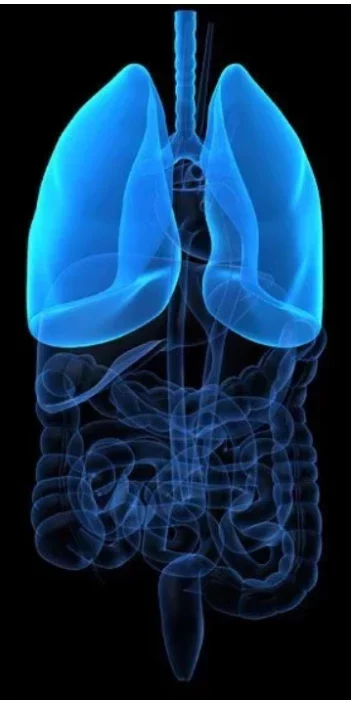Article
COVID-19 Pandemic Has Led to Decrease in Lung Cancer Diagnoses and Increase in Mortality Rate, Study Shows
Author(s):
January 29, 2021 - Thirty percent fewer new lung cancer cases have been diagnosed during the coronavirus disease 2019 pandemic versus pre-pandemic, with more symptomatic and severe cases of non–small cell lung cancer diagnosed during this period.

Thirty percent fewer new lung cancer cases have been diagnosed during the coronavirus disease 2019 (COVID-19) pandemic versus pre-pandemic, with more symptomatic and severe cases of non–small cell lung cancer (NSCLC) diagnosed during this period, according to results from a retrospective study from Spain that were presented during the International Association for the Study of Lung Cancer 2020 World Conference on Lung Cancer (WCLC) Singapore.
“Lung cancer diagnoses have been affected during COVID-19 with as little as 38% of new cases in non–small cell lung cancer, more symptomatic and severe cases were diagnosed, but not in small cell lung cancer,” said Roxana Reyes, MD.
In Spain, when a state of emergency was put into effect due to the pandemic, it forced the prioritization of healthcare services toward patients with COVID-19, also many people also quarantined and delayed physician check-ups, resulting in significant changes in cancer management and initial diagnoses of cancer, suggested Reyes, of the Thoracic Oncology Group at the Hospital Clínic de Barcelona. As such, delays in cancer treatment and diagnoses were observed that were associated with higher mortality rates.
The investigators collected clinical and biological data from 2 tertiary hospitals in Spain of new cases of non–small cell lung cancer (NSCLC) and small cell lung cancer (SCLC) over 2 periods: January to June 2019 (before COVID-19) and January to June 2020 (during COVID-19). The primary end point of the analysis was the differences between the 2 periods in terms of the number of new lung cancer cases and the disease severity, which was characterized by performance status, stage, and any significant complications at diagnosis. A secondary end point was the 30-day mortality rate by period and histology group.
A total of 162 patients with newly diagnosed lung cancer were enrolled in the study, including 100 who were diagnosed pre-COVID-19 and 62 during COVID-19. A decrease of 38% in diagnoses was observed between the 2 periods.
Of these patients, 68% had NSCLC and 32% had SCLC. The median age was around 66 years old and the majority were male (70%) with advanced disease (54%).
Most of the baseline characteristics were similar between the before-COVID-19 and during-COVID-19 patients, except for smoking status. In the before-COVID-19 newly diagnosed patients, 27% were current smokers, 65% were former smokers, and 8% were non-smokers, whereas the rates were 42%, 42%, and 16%, respectively, in the during-COVID-19 group.
In the NSCLC population specifically (n = 110), there was a decrease of 36% in new diagnoses during COVID-19 and more severe cases were diagnosed during COVID-19. The rate of advanced disease diagnosed was 46% in 2019 compared with 58% in 2020, and the incidence of symptomatic disease was 63% versus 74% for before and during COVID-19, respectively. More than 2 metastatic sites were observed at baseline in 16% of those diagnosed during COVID-19 versus in 12% diagnosed before COVID-19. Oncology emergencies were reported in 7% diagnosed in 2020 versus 3% diagnosed in 2019. Also, 44% of deaths during hospitalization were reported in patients diagnosed during COVID-19 compared with 17% in those diagnosed during COVID-19.
In terms of SCLC, 33 cases were diagnosed pre-COVID-19 and 19 during COVID-19, amounting to a decrease of 42% of new diagnoses. No more severe disease was observed, though, in the 2020 cases. The rate of advanced disease was 67% in those diagnosed in 2019 versus 52% among those diagnosed in 2020 and symptomatic disease was reported in 79% versus 74%, respectively. More than 2 metastatic sites at baseline were diagnosed in 36% in 2019 compared with 26% in 2020. Oncology emergencies were reported in 12% before COVID-19 and 5% during COVID-19. The rate of hospitalization (33% vs 21%) and death during hospitalization (18% vs 0%) was lower in the during-COVID-19 group versus the before-COVID-19 group, respectively.
By month, new cases of SCLC diagnoses dropped overall from January to June in 2020 but then increased again in July whereas new cases of NSCLC diagnoses did not differ significantly month to month in 2020.
Median overall survival during COVID-19 was 6.7 months (95% CI, 5.4-not reached) compared with 7.9 months (95% CI, 4.7-12) before COVID-19, with a median follow-up of 10.4 months. These overall survival data, however, are still immature.
The 30-day mortality rate in patients with newly diagnosed NSCLC significantly increased with the pandemic from 25% before COVID-19 to 49% during COVID-19. With SCLC new diagnoses, the 30-day mortality rate jumped from 18% pre-COVID-19 to 32% during COVID-19.
“The COVID-19 pandemic is likely to last for a very long period of time, so we have to make a special effort for ensuring the cancer diagnosis and treatment of our patients,” Reyes stressed.
Heather Wakelee, MD, of Stanford University Medical Center in California, commented during the briefing that as a result of the decrease in diagnoses and the later stages at which lung cancer is found in these patients, that it will lead to further challenges ahead. The study will continue to assess the impact of COVID-19 on lung cancer diagnoses and prognoses long term.
Reference
Reyes R, López-Castro R, Auclin E, et al. Impact of COVID-19 Pandemic in the Diagnosis and Prognosis of Lung Cancer. Presented at: 2020 World Conference on Lung Cancer Singapore; January 28-31; Virtual. Abstract 3700.








